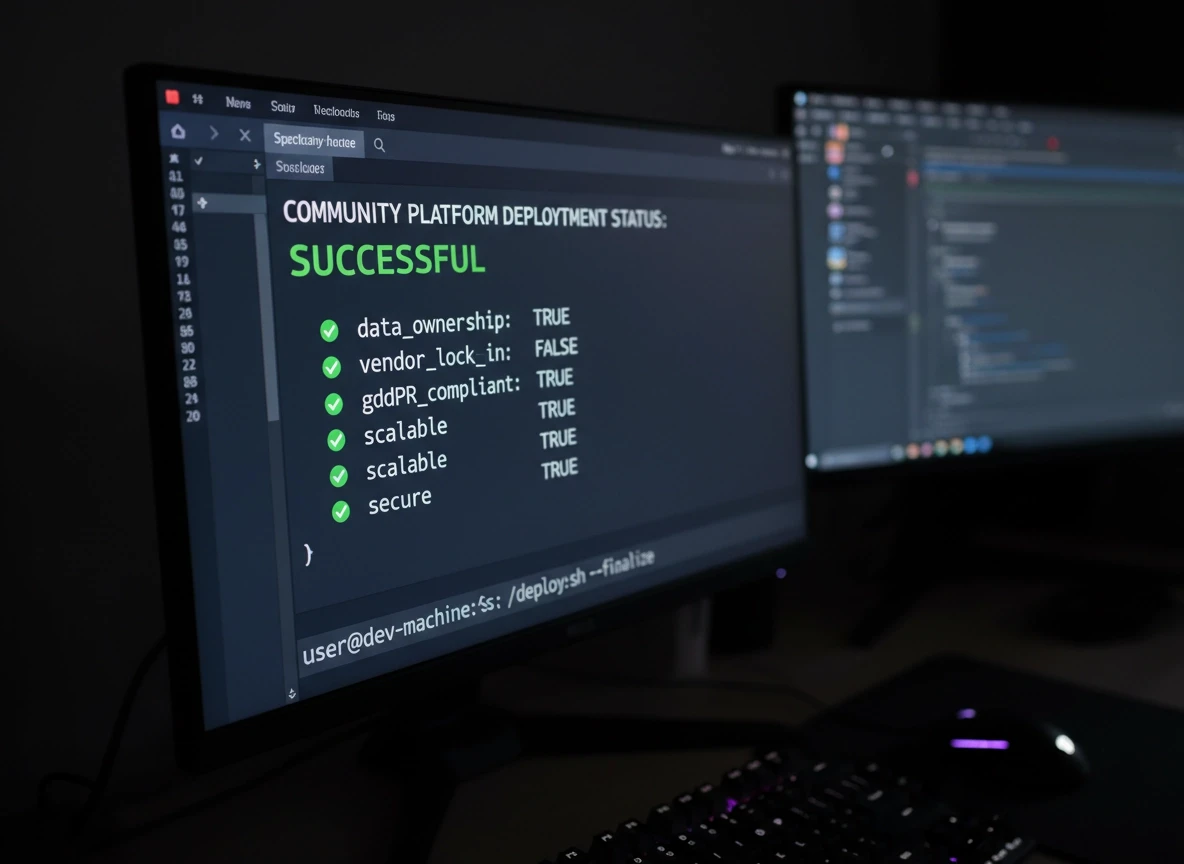Content Strategy for Online Communities: Tips from SelfCommunity
• 4 mins read
Clear goals and tangible results: how to design a content strategy that works
Traditional marketing is quickly giving way to more refined and up-to-date techniques, with Community Marketing increasingly standing out.
More and more brands are now dedicating virtual spaces to their users where shared values and interests can be nurtured—spaces that act as powerful catalysts for boosting loyalty to the company and creating valuable connections with the target audience.
In this landscape, structuring a content strategy is a key factor for the project’s success. In this article, we share our tips for creating a tailor-made strategy for your Brand Community.
Setting the right goals for an effective content strategy
The first step to building an effective content strategy for an online community is setting clear goals. Without them, you risk publishing content without real purpose and, therefore, unable to deliver meaningful results.
Your goals should be:
Specific: Know exactly what you want to achieve with your content—whether it’s increasing community engagement, attracting new members, or improving your website’s SEO ranking. Only from this clarity can you build a strategy tailored to your needs.
Measurable: Always be able to accurately evaluate how well you are meeting your goals by analyzing metrics that align with your objectives. For example, to increase engagement, track comments, shares, and likes.
Achievable: Set realistic and reachable goals based on your available resources. Ambition is good, but unreachable goals can sabotage your plans. For instance, if you’re the only person creating content, aiming for daily posts might not be feasible.
Relevant: Your goals must be relevant to your community and business. For example, if you focus on fitness and your audience cares about physical wellness, your content should reflect those interests to maintain consistency.
Time-bound: Every goal needs a deadline to keep you focused and effectively monitor progress.
Planning content for your community
Once your goals are set and you understand your audience, it’s time to plan your content calendar—an essential tool to organize and execute your strategy. It helps organize ideas, schedule content creation and distribution, and maintain consistency.
Start by brainstorming content ideas based on your audience’s needs and your strategy’s objectives. Analyze your target users’ traffic to identify niche interests to engage your community better.
Next, decide which formats work best for your community—articles, videos, podcasts, polls, and more. Often, a combination of formats is the most effective.
Plan your content frequency realistically, considering your resources and the goals you set earlier. Some content can be evergreen, while others may be linked to specific events—factor this into your schedule to maximize impact.
If you have collaborators, delegate tasks clearly—assign content creation, editing, promotion, etc.
Finally, keep your content calendar dynamic: update it based on results, noting what works and what doesn’t.
Winning interactions: how to engage users in your content strategy
An effective content strategy is not just about creating and publishing content; it’s about actively involving your community members.
Here are some tips:
Create interactive content: Polls, quizzes, and similar tools encourage engagement and foster a sense of belonging.
Respond to your audience’s interactions: Timely replies to comments and questions show appreciation and encourage further interaction.
Encourage user-generated content (UGC): UGC brings fresh content and allows members to share their stories. Motivate this through contests, challenges, or simply asking for contributions.
Artificial Intelligence: an opportunity to use wisely
AI is becoming more sophisticated, and generative AI is gaining ground in content marketing. These technologies can produce high-quality content much faster, saving time and money.
However, AI use requires caution.
Currently, AI cannot fully replace humans in web content creation due to lack of authenticity, originality, and humanity. AI’s main strength is speed, but it lacks the human touch that makes content unique and engaging.
Human copywriters have a decisive advantage: the ability to create emotional, meaningful connections with users.
Moreover, AI still often produces grammatical errors or unnatural syntax, revealing its artificial nature.
Our advice: treat AI as a tool—not a replacement for humans. Use it to reduce resource needs but always review and refine content with human input.
In conclusion
Building an effective content strategy is crucial to foster growth and engagement within a Brand Community. A clear strategy delivers targeted, valuable content that helps the company meet marketing goals and maintain meaningful connections with its audience.
Start by setting clear, measurable, and realistic goals aligned with your community’s interests. Plan carefully, choosing formats and frequency that you can sustain.
User engagement is key—interactive content, prompt responses, and UGC build a participative and loyal ecosystem.
While AI can optimize content production, the human element remains essential for authentic emotional connections.
Now that you know how to structure an effective content strategy for your project, it’s time to implement it using a comprehensive proprietary platform designed to easily build and manage your community. And we have the solution for you: SelfCommunity.
We won’t keep you here any longer—discover more about our solution by requesting a free demo that will show you all the potential of SelfCommunity.



